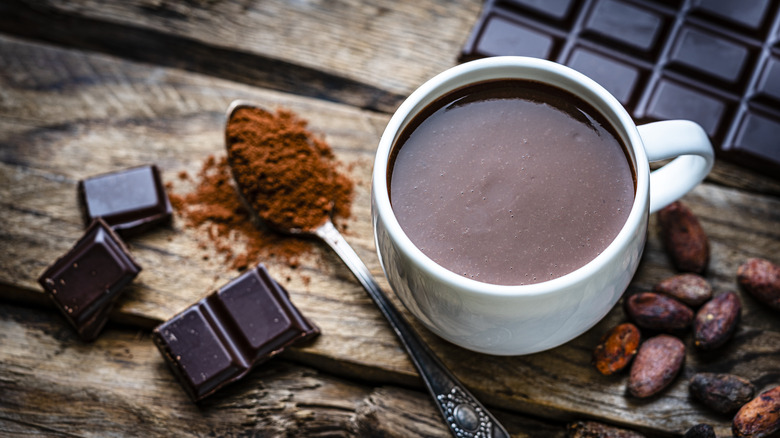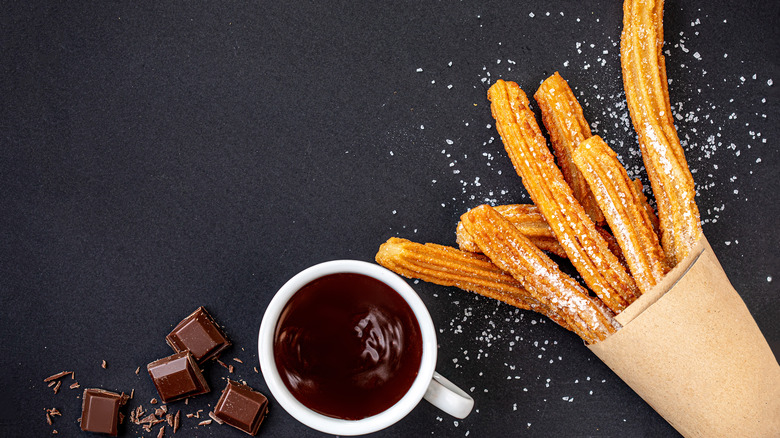In Spain, Hot Chocolate Is Not For Drinking
We often refer to the perfect social or romantic duos with analogies to iconic food pairings: Peas and carrots, peanut butter and jelly, and bread and butter are all undeniably better together than they are on their own. In Spain and many Latin American countries, churros and hot chocolate are the quintessential inseparable pairing.
While dipping pastries or cookies in hot chocolate between sips is par for the course in many culinary customs, in Spain, hot chocolate is not for drinking. Spanish hot chocolate is less of a drink and more of a dipping sauce. Unlike the standard hot chocolate we top with marshmallows or whipped cream, Spanish hot chocolate is much richer and has a pudding-like consistency. As such, it's served in smaller portions and a shallower cup, making it easier to coat each bite of sugar-cinnamon-dusted churro. Spanish hot chocolate's velvety texture is the perfect complement to the crispy crunch of churros.
To achieve the thick, custardy texture and ultra-decadent pure chocolate flavor, the Spanish preparation of hot chocolate involves melting bars of semi-sweet or dark chocolate in whole milk with sugar and a few teaspoons of cornstarch. Cornstarch is a well-known thickening agent and the key ingredient behind Spanish hot chocolate's pudding-like texture. Drinking Spanish hot chocolate is a faux pas and — considering its thickness — would be an awkward endeavor anyway!
A marriage of the Old and New World foods
In Spain, churros and chocolate are common street foods and restaurant-style desserts enjoyed at all hours of the day, from sweet breakfasts to midnight snacks. The famous and beloved duo represents a positive melding of culinary customs that came out of the very turbulent Spanish conquest. Derived from the name for a type of sheep herded in Spain for centuries, churros are theorized to have originated as a substitute for fresh baked goods for shepherds to enjoy on long treks through the mountains.
Churros gained popularity throughout Spain before Cortez's conquest of the New World. However, as a result of the Spanish conquest, churros and sugar were introduced to the Americas, while cacao was a New World crop brought back by the Spaniards to the Old World. Using sugar to elaborate a thick hot chocolate sauce came into being around the 17th century, near the same time as the explosion of European chocolate houses. Therefore, it took New World ingredients to help realize the full potential of both churros and chocolate.
This coupled history of churros and chocolate explains why the dessert duo is as famous in Latin America and the Philippines as it is in Spain. That said, each culinary custom puts a unique twist on the pairing. For example, in Mexico, chocolate or custard is often piped into the hollow centers of churros.

